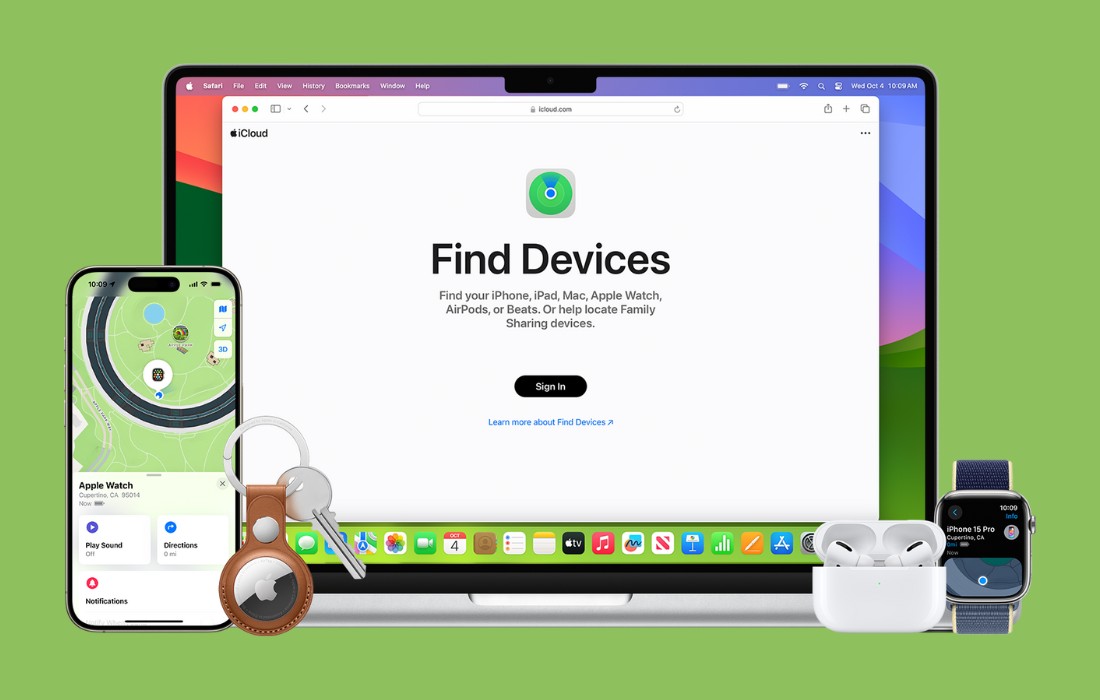With all the hype around Artificial Intelligence, robots, self-driving cars, etc., it can be easy to assume that AI doesn’t impact our everyday lives. In reality, most of us encounter Artificial Intelligence in some way or another almost daily. From the moment you wake up to check your smartphone to watching another Netflix-recommended movie, AI has quickly made its way into our everyday lives. According to a study by Statista, the global AI market is set to grow up to 54 percent every single year. But what exactly is AI? Will it serve mankind well in the future? There are tons of advantages and disadvantages to artificial intelligence, which we’ll discuss in this article. But before we jump into AI’s pros and cons, let us glance over what AI is.
What Is Artificial Intelligence?
Before we jump on to the advantages and disadvantages of Artificial Intelligence, let us understand what AI is in the first place. From a bird’s eye view, AI provides a computer program the ability to think and learn on its own. It is a simulation of human intelligence (hence, artificial) into machines to do things that we normally rely on humans. This technological marvel extends beyond mere automation, incorporating a broad spectrum of AI skills – abilities that enable machines to understand, reason, learn, and interact in a human-like manner. There are three main types of AI based on its capabilities – weak AI, strong AI, and super AI.
- Weak AI – Focuses on one task and cannot perform beyond its limitations (common in our daily lives)
- Strong AI – Can understand and learn any intellectual task that a human being can (researchers are striving to reach strong AI)
- Super AI – Surpasses human intelligence and can perform any task better than a human (still a concept)
Here’s a quick video to help you understand what artificial intelligence is and its advantages and disadvantages.
Advantages and Disadvantages of Artificial Intelligence
An AI program is capable of learning and thinking. It is possible to consider anything artificial intelligence if it consists of a program performing a task that we would generally assume a human would perform.
While artificial intelligence has many benefits, it also has drawbacks. Let’s begin with the pros of AI.
Advantages of Artificial Intelligence
1. Reduction in Human Error
One of the most significant benefits of Artificial Intelligence is that it can significantly reduce errors and increase accuracy and precision. The decisions taken by AI in every step are decided by information previously gathered and a certain set of algorithms. When programmed correctly, these errors can be reduced to null.
Example:
Robotic surgery systems are an example of AI reducing human error. These systems can perform complex procedures with precision and accuracy, reducing the risk of human error and improving patient safety in healthcare.
2. Decision-Making
On of the noted pros of AI is decision-making. AI enhances decision-making by leveraging vast data to identify patterns and trends often invisible to humans. Machine learning algorithms can analyze historical data and predict future outcomes, allowing businesses and individuals to make informed decisions quickly and accurately. AI’s ability to process information at high speeds reduces the time required for decision-making, thus providing a competitive advantage in dynamic environments.
Example:
In the healthcare industry, AI assists doctors in diagnosing diseases. For example, AI algorithms can analyze medical images, such as X-rays or MRIs, to detect early signs of conditions like cancer. This not only helps in providing timely treatment but also reduces the likelihood of human error in diagnosis. By augmenting doctors’ decision-making processes, AI improves patient outcomes and more efficient healthcare delivery.
3. Zero Risks
Another significant benefit of AI is that humans can overcome many risks by letting AI robots do them for us. Whether defusing a bomb, going to space, or exploring the deepest parts of oceans, machines with metal bodies are resistant and can survive unfriendly atmospheres. Moreover, they can provide accurate work with greater responsibility and not wear out quickly.
Example:
One example of zero risks is a fully automated production line in a manufacturing facility. Robots perform all tasks, eliminating the risk of human error and injury in hazardous environments.
4. 24×7 Availability
One of the key benefits of AI is round the clock availability. Many studies show humans are productive for only about 3 to 4 hours daily. Humans also need breaks and time off to balance their work and personal lives. But AI can work endlessly without breaks. They think much faster than humans and perform multiple tasks simultaneously with accurate results. They can even handle tedious, repetitive jobs easily with the help of AI algorithms.
Example:
An example is online customer support chatbots, which can provide instant assistance to customers anytime, anywhere. Using AI and natural language processing, chatbots can answer common questions, resolve issues, and escalate complex problems to human agents, ensuring seamless customer service around the clock.
5. Digital Assistance
Some of the most technologically advanced companies engage with users using digital assistants, which eliminates the need for human personnel. Many websites utilize digital assistants to deliver user-requested content. We can discuss our search with them in conversation. Some chatbots are built in a way that makes it difficult to tell whether we are conversing with a human or a chatbot.
Example:
We all know that businesses have a customer service crew that must address patrons’ doubts and concerns. Businesses can create a chatbot or voice bot using AI to answer all of their client’s questions.
6. New Inventions
AI drives numerous innovations in virtually every field that help humans tackle the most challenging issues. For example, recent advancements in AI-based technologies have enabled doctors to detect breast cancer in women at earlier stages.
Example:
Another example of innovative inventions is self-driving cars, which utilize a combination of cameras, sensors, and AI algorithms to navigate roads and traffic autonomously. These vehicles have the potential to enhance road safety, reduce traffic congestion, and increase accessibility for individuals with disabilities or limited mobility. Companies like Tesla, Google, and Uber are at the forefront of developing self-driving cars, poised to revolutionize the transportation industry.
7. Unbiased Decisions
Emotions inherently drive humans, while AI operates without emotional influence, maintaining an efficient and rational approach. One significant advantage of Artificial Intelligence is its lack of biased views, leading to more accurate and objective decision-making.
Example:
An example is AI-powered recruitment systems that screen job applicants based on skills and qualifications rather than demographics. This helps eliminate bias in the hiring process, leading to an inclusive and more diverse workforce.
8. Automate Repetitive Tasks
Another known benefit of AI is the automation it brings along! In our daily work, we perform many repetitive tasks, such as checking documents for flaws and mailing thank-you notes. Artificial intelligence may efficiently automate these menial chores and even eliminate “boring” tasks for people, allowing them to focus on being more creative.
Example:
An example of this is using robots in manufacturing assembly lines. These robots can handle repetitive tasks such as welding, painting, and packaging with high accuracy and speed, reducing costs and improving efficiency.
9. Daily Applications
Today, our everyday lives depend entirely on mobile devices and the internet. We utilize a variety of apps, including Google Maps, Alexa, Siri, Cortana on Windows, OK Google, taking selfies, making calls, responding to emails, etc. Using various AI-based techniques, we can also anticipate today’s weather and the days ahead.
Example:
When planning a trip about twenty years ago, you must have asked someone who had already been there for instructions. All you need to do now is ask Google where Bangalore is. The best route between you and Bangalore will be displayed on a Google map, along with Bangalore’s location.
10. AI in Risky Situations
One of the main benefits of artificial intelligence is this: By creating an AI robot that can perform complex tasks on our behalf, we can overcome many dangerous restrictions humans face. It can be utilized effectively in any natural or man-made calamity, whether going to Mars, defusing a bomb, exploring the deepest regions of the oceans, or mining for coal and oil.
Example:
For instance, the explosion at the Chernobyl nuclear power facility in Ukraine. As any person who came close to the core would have perished in a matter of minutes, at the time, there were no AI-powered robots that could assist us in reducing the effects of radiation by controlling the fire in its early phases.
11. Medical Applications
AI has also made significant contributions to medicine, with applications ranging from diagnosis and treatment to drug discovery and clinical trials. AI-powered tools can help doctors and researchers analyze patient data, identify potential health risks, and develop personalized treatment plans. This can lead to better patient health outcomes and help accelerate the development of new medical treatments and technologies.
Example:
AI has revolutionized cancer diagnosis and treatment. For instance, AI algorithms can analyze medical images such as mammograms or CT scans to detect early signs of cancer that human eyes may miss. In one notable case, researchers at Google Health developed an AI model that outperformed radiologists in identifying breast cancer in mammograms. The AI system was able to reduce false positives and false negatives, leading to more accurate diagnoses. Additionally, AI can help create personalized treatment plans by analyzing a patient’s genetic information, medical history, and current health status.
12. Enhanced Efficiency and Productivity
The next benefit of AI is efficiency! AI significantly boosts efficiency and productivity by optimizing processes and reducing the time and resources required to complete tasks. AI systems can analyze data, predict outcomes, and suggest improvements, allowing businesses to streamline operations and eliminate bottlenecks. This leads to faster production cycles, reduced operational costs, and higher output quality.
Example:
In manufacturing, AI-driven robots and predictive maintenance systems are transforming production lines. Robots equipped with AI can work alongside humans, performing tasks such as assembly, welding, and painting with precision and speed. Predictive maintenance uses AI to monitor equipment health and predict failures before they occur, preventing downtime and ensuring continuous production. These advancements result in higher production rates and better quality control.
13. Enhanced Safety and Fraud Detection
One other advantage of AI is its ability to detect fraud! It enhances fraud detection and prevention by analyzing transaction patterns and identifying anomalies that may indicate fraudulent activities. Machine learning algorithms can detect unusual behavior and flag suspicious transactions in real time, allowing organizations to take immediate action. AI’s ability to learn from new data continuously improves its accuracy in identifying and preventing fraud.
Example:
In the financial industry, AI is used to combat credit card fraud. AI systems analyze millions of transactions to identify patterns associated with fraud, such as sudden large purchases or transactions in different geographic locations. When an anomaly is detected, the system alerts the bank and the cardholder, enabling swift action to prevent unauthorized transactions. This not only protects customers but also saves financial institutions from significant losses.
14. Improving Human Workflows
AI analyzes work processes and identifies inefficiencies, suggesting improvements for better human workflows. By examining how tasks are performed, AI can pinpoint areas where time and resources are wasted, offering recommendations for streamlining operations. This helps organizations optimize workflow, improve employee productivity, and reduce operational costs.
Example:
AI tools can analyze project timelines, resource allocation, and task dependencies in project management to identify bottlenecks and suggest more efficient workflows. For instance, an AI system might recommend reassigning tasks based on team members’ skills and availability, leading to faster project completion and better resource utilization. This ensures that projects are completed on time and within budget, enhancing overall project efficiency.
15. Enhanced Customer Experience
AI enhances customer experience by providing personalized recommendations based on individual preferences and behavior. By analyzing past purchases, browsing history, and demographic information, AI can predict what products or services a customer might be interested in, increasing customer satisfaction and loyalty.
Example:
Streaming services like Netflix use AI algorithms to recommend shows and movies to users. The system analyzes viewing history, ratings, and user interactions to suggest content that aligns with individual preferences. For example, the AI recommends similar titles if users watch crime dramas frequently. This personalization keeps users engaged and increases their likelihood of subscribing to the service.
16. Smarter Surveillance
The next notable benefit of AI is the surveillance capability it brings along! AI improves security and surveillance by monitoring and analyzing vast amounts of data from various sources, such as video feeds, sensors, and network traffic. AI systems can detect unusual activities, recognize faces, and identify potential security threats in real time, enabling quick responses to prevent incidents and enhance safety.
Example:
In smart cities, AI-powered surveillance cameras monitor public spaces. These cameras can detect suspicious behavior, such as loitering in restricted areas or unattended bags, and alert security personnel. Facial recognition technology can also identify known criminals or missing persons, assisting law enforcement in maintaining public safety. This proactive approach to security helps prevent crimes and ensures a safer environment for residents.
17. Bias and Fairness
AI can help identify and mitigate bias in decision-making processes, promoting fairness and equality. By analyzing large datasets, AI can uncover patterns of bias and provide insights into how they affect outcomes. Additionally, AI algorithms can be designed to minimize biases, ensuring that decisions are based on objective criteria rather than subjective or discriminatory factors.
Example:
AI tools screen resumes and conduct initial candidate assessments in the hiring process. These tools can be programmed to ignore irrelevant factors such as gender, race, or age, focusing solely on qualifications and experience. For instance, an AI system can rank candidates based on their skills and achievements rather than demographic characteristics, promoting a fairer hiring process and increasing diversity within the organization.
18. Cost Effective
The next benefit of AI is cost effectiveness! Businesses can automate repetitive tasks such as data entry, scheduling, and customer service by implementing AI technologies. This reduces the need for a large workforce to handle these tasks, leading to significant cost savings in salaries, benefits, and training.
Example:
AI-driven customer service chatbots can handle most customer inquiries, reducing the need for large call center teams. For instance, many e-commerce companies use chatbots to answer common questions, process orders, and provide shipping updates, significantly reducing the workload on human agents.
19. Increase in Workforce Productivity
Another point in the list of ‘pros of AI’ is the increase in workforce productivity. AI-powered tools can help manage and optimize various aspects of work, such as prioritizing tasks, scheduling meetings, and automating routine processes. This allows employees to focus on more strategic and creative tasks, thereby increasing their productivity.
Example:
AI project management tools like Asana use machine learning to prioritize tasks and deadlines, recommending what to focus on subsequent and automating routine follow-ups. This helps teams manage their workloads more effectively and complete projects faster.
20. Personalization
AI algorithms can analyze large amounts of data about user behavior, preferences, and interactions. This data is then used to create personalized experiences, such as content recommendations, targeted advertisements, and customized user interfaces, enhancing user satisfaction and engagement.
Example:
Netflix’s AI algorithms analyze viewing history and preferences to recommend shows and movies more likely to interest the user. This personalization helps keep users engaged with the platform, increasing their likelihood of continued subscriptions.
21. Easily Handles Big Data
AI technologies can process and analyze large datasets much faster than traditional methods. This enables businesses to gain valuable insights, make data-driven decisions, and predict future trends more accurately.
Example:
AI in finance analyzes large datasets and market trends to inform investment decisions. Financial institutions use AI to process and analyze real-time market data, identify patterns, and generate accurate predictions, allowing them to make informed investment strategies.
22. Problem-Solving
AI technologies excel at recognizing patterns in large datasets and can be used to solve complex problems across various domains. Businesses and researchers can develop innovative solutions and improve decision-making processes by leveraging AI.
AI in healthcare uses machine learning to analyze medical images, such as X-rays and MRIs, to diagnose diseases faster and more accurately than human doctors. This leads to quicker and more accurate treatment decisions, improving patient outcomes.












